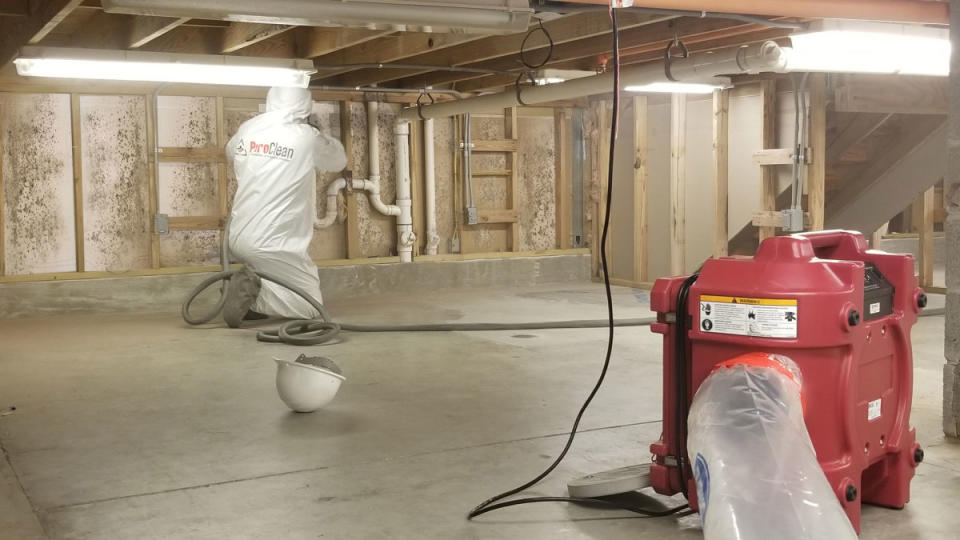How to Tell if Mold is Old Growth vs. New Growth
Finding mold in your home is never a happy discovery, especially when unsure if it's a recent infestation or an old issue resurfacing. Given the widely shared concerns about toxic black mold and potential health risks, taking the time to determine if your discovery is new or old is the first step as you make a plan to address and manage the affected areas.
How do you tell if mold damage is new?
Spotting new vs. old mold damage can be tricky, but here are some clues:
Color and Texture: Fresh toxic molds are often slimy and bright, while older, dead mold can appear dry and powdery, with hues ranging from yellow to black.
Odor: New mold colonies tend to have a stronger, musty smell, while older mold might have a milder scent.
Moisture Source: Check for recent water damage or leaks; if found, the mold is likely new.
Visible Growth: Sudden or rapid mold growth during inspections could signal new contamination.
Documentation: Compare current conditions to past records to assess if mold is recent.
Regardless of presumed age, address all types of mold promptly to avoid health and structural issues. When in doubt, consult a mold inspector and remediation expert for accurate assessment. During a mold inspection, professionals can analyze mold spores to determine the age of mold, and help you understand if it's inactive mold or a breed that's experiencing active mold growth.
Related: How to Test and Improve Your Home’s Indoor Air Quality
Why is mold damage bad for homeowners?
Mold damage presents a multitude of challenges for homeowners.
Triggers poor health. All mold activity–especially black mold exposure–can pose significant health risks. It may not even be visible mold, but it can still create airborne spores. When in doubt, test your indoor air quality. Symptoms of mold exposure can present as allergies, eye irritation, and shortness of breath, particularly in individuals with vulnerable immune systems, and potentially leading to more severe health complications with prolonged exposure.
Causes structural damage. It can deteriorate materials like wood and drywall, potentially compromising the safety of the home and necessitating costly repairs.
Impacts property value. It can dramatically reduce the property's value, deterring potential buyers and complicating the selling process.
Challenging to remove. Existing mold growth leaves an unsightly appearance on surfaces like walls and ceilings, even persisting after remediation efforts.
Legal and insurance issues. Dealing with mold problems can lead to legal and insurance issues, as coverage for mold damage may be limited or excluded from standard homeowner's insurance policies, potentially resulting in legal disputes, particularly if negligence is a factor.

PuroClean
How to Prevent Mold Damage
If navigating a pre-existing mold infestation and costly mold cleanup is the last thing you want to be doing, prioritize prevention. "In the ongoing battle against allergenic mold and mold-related damage, the Institute of Inspection, Cleaning, and Restoration Certification (IICRC) offers a comprehensive set of preventive measures," shares Darren Hudema, Director of Training and Technical Services at PuroClean. "These include controlling moisture by keeping indoor humidity levels low (below 60%RH) and swiftly addressing any building leaks or water damage. Adequate ventilation, particularly in moisture-prone areas like bathrooms and kitchens, helps to minimize water vapor, condensation and damp walls."
He adds, "Proper moisture retarding materials such as vapor barriers in exterior walls and crawlspaces and the insulation of walls, attic floors, and roofs are crucial in thwarting excessive moisture buildup that leads to moldy items."
Related: 7 Things That Mold Mitigation Teams Do to Repair Damage
Airborne mold spores don't always spawn in plain sight. "Managing wet conditions and water sources outside is one of the best ways to maintain a dry building and manage the presence of mold growth," notes Hudema. "This can be accomplished by installing gutters on buildings and drain sources of moisture away from the building foundation, which helps prevent water from infiltrating the slab, basements, or crawl spaces. Regular maintenance checks of plumbing and air conditioning systems can nip potential water damage and building mold issues in the bud, as can checking for roof leaks. Employing mold-resistant materials, such as specialized drywall and paint, is especially prudent in areas susceptible to moisture. Monitoring indoor humidity levels with a hygrometer allows homeowners to take corrective action if levels exceed recommended thresholds." Running a dehumidifier and exhaust fan are ways to help reduce moisture if you're worried about breeding the perfect conditions for mold."
He continues, "Lastly, if a building has been affected by water damage, it is essential to dry affected materials quickly and to their normal dry standards using a powerful air mover fan. By embracing these proactive strategies, homeowners can significantly reduce the risk of fungal growth and cultivate a healthier indoor environment. Routine building maintenance is important, regularly checking and repairing leaks quickly."

